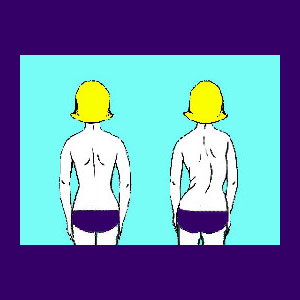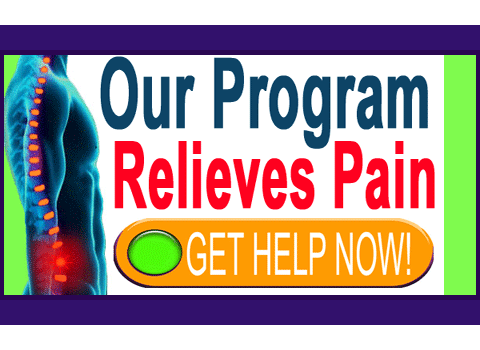
Chronic back pain in children is rare without the existence of extenuating anatomical circumstances. However, some children do experience mild to severe pain very early in life. The reasons for the expression of pain can vary greatly and the treatments must match the actual source of the pain in order to prove effective. If the true cause is not discovered, the child has a chance of growing up into an adult with chronic back pain which may endure for a very long time.
This discussion explores the sad occurrence of severe dorsalgia in children.
Back Pain in Children Due to Injury
Children are very active and adventurous. They do not always know the risks of an activity, nor do they always recognize the limits of their physical bodies. Children can injure their backs in the same manner as any adult.
Muscular back and neck injuries can occur during sports or play. These injuries are rarely serious, but can produce some very scary pain for the child.
Disc injuries are not common in children, but they can occur. Children’s spines are naturally more flexible and are not normally prone to herniations, except in extreme circumstances.
Vertebral fractures are just as likely to occur in children as in adults. Actually they are more likely, since young bones are softer and thinner than mature bones. Of course, the trauma must be severe to cause a broken spinal bone.
Children involved in certain high risks activities, such as gymnastics, football and martial arts demonstrate a greater risk for both spinal degeneration, as well as spinal injury earlier in life.
Back Pain in Children Due to Disease
The most common type of back problem faced by children is scoliosis. This spinal curvature usually occurs as a pre-teen, but can occur much earlier in life. The earlier it starts, the greater the chance of the child developing a strong curvature.
Scoliosis is rarely painful in mild or even moderate forms, but can be crippling in some extreme expressions. It is crucial to give the child support and reassurance to prevent nocebo effects of the diagnosis and to maintain their positive self image.
Children can also develop other rare forms of spinal disease including severe arthritis. These conditions can be life altering and usually require drastic treatment.
Some children may have been born with a congenital spinal defect which may range from harmless to debilitating. Some of these may include transitional vertebrae, sacralization and spina bifida.
Psychological Back Pain in Kids
Teens are especially prone to developing psychological back pain. My own pain started when I was 16. This is an age of tremendous scholastic pressure, especially for perfectionistic college-bound students. There are also social and peer pressures, changes in attitudes, developments in personality traits, and loss of childhood innocence that all contribute to the formation of psychological back pain causation.
Younger children are not usually affected by chronic psychogenic pain. Some very bright and sensitive children can suffer from psychological back pain, or PIPS of some different variety. Many doctors speculate that growing pains are really a mindbody phenomenon that is the equivalent of psychosomatic pain in adults. Children can experience periods of high anxiety that can lead to various expressions of psychoemotionally-generated physical symptoms.
Guidance on Back Pain in Children
Children are people too. They are susceptible to many of the same risks for back pain as adults. Luckily, they are young and (hopefully) healthy. Their minds and bodies are still forming and can have miraculous abilities to fight off sickness and injury.
It is very important to treat children with care and compassion when they need medical attention. Listen to them and allow them to express how the pain is affecting them. Reassure them that they will be fine and good as new soon.
Do not allow your child to think that they are damaged goods due to a back problem. This negative effect will certainly cause further and more serious conditions in their futures. Allow children to learn about their back pain and to understand how their treatments will help them. Knowledge is power, and for a small frightened child with back pain, it might be all they have.
This page is dedicated to my many wonderful juvenile martial arts students. It takes special care to train children in the fighting sciences. They must develop the proper balance of skill, discipline, enjoyment and maturity. I always found the hardest part for them was the first time they got hurt in class. This is the key moment for many children. If they are made to feel scared, embarrassed, or inferior; they are gone. This is why some teachers lose so many of their students. It is important for the instructor to reassure them that they can handle it and use the experience to grow stronger and better. If parents and doctors would listen to these words, we would certainly make the next generation better than the last.





